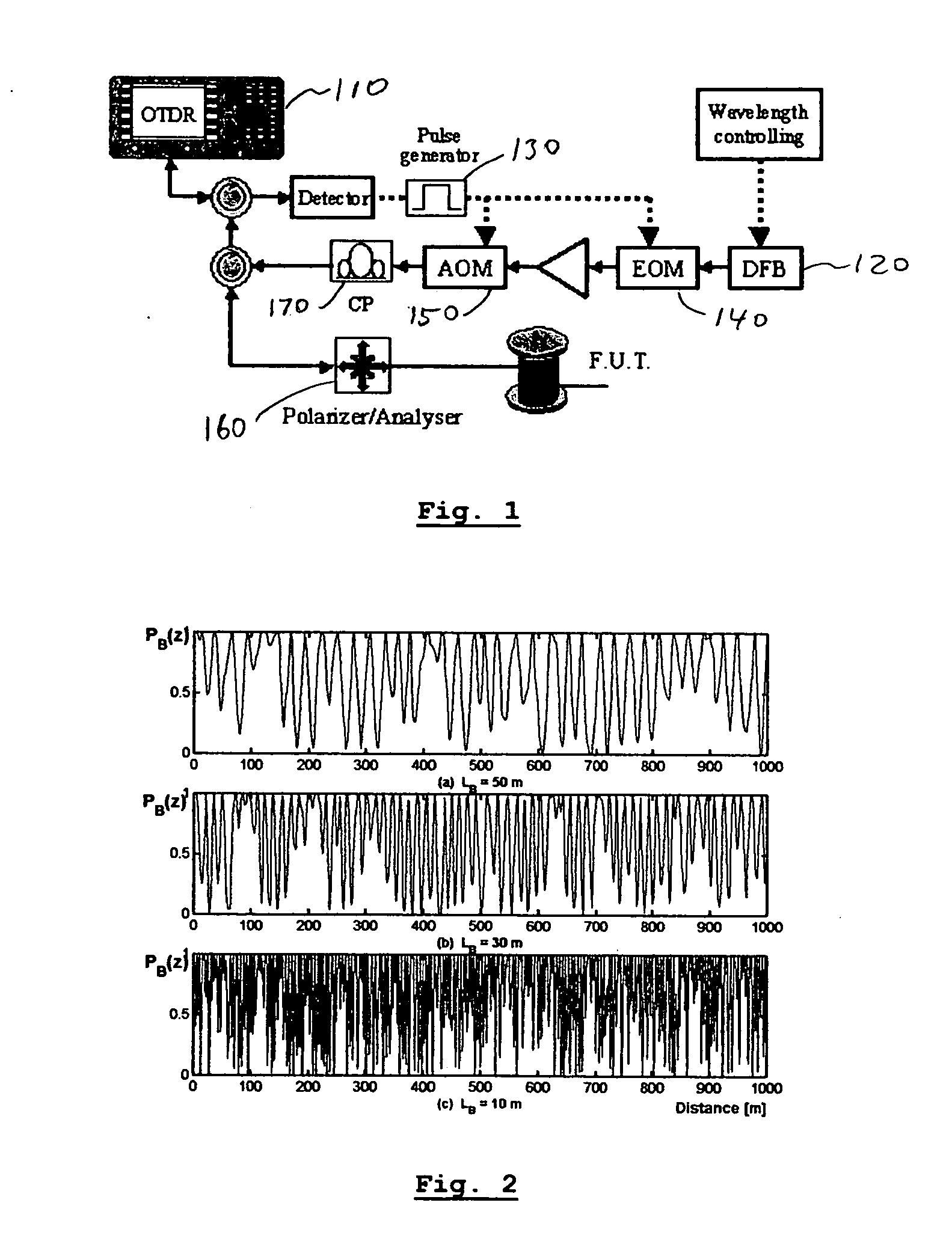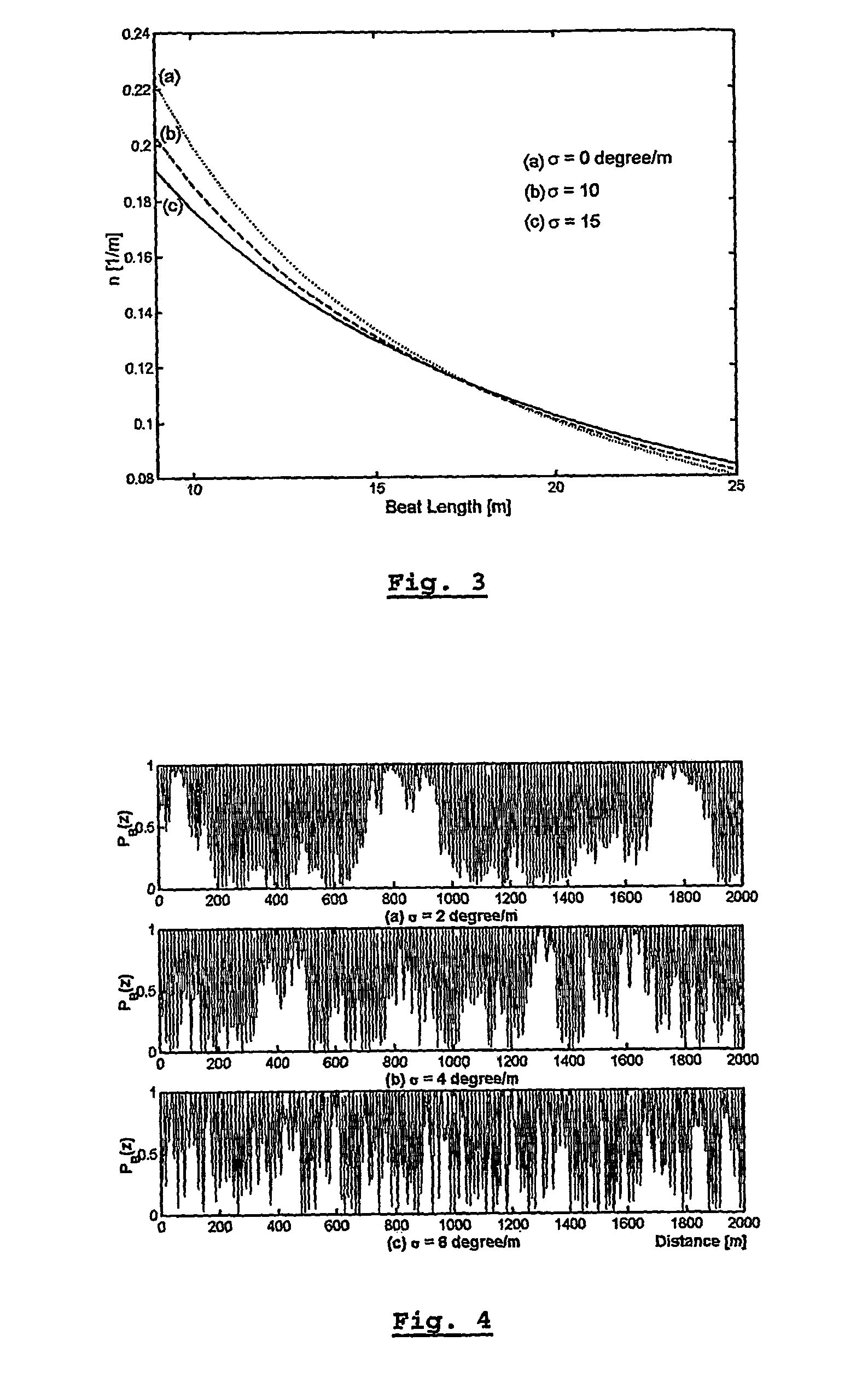Method For Characterizing An Optical Fiber Link
a technology of optical fiber and characterization method, which is applied in the direction of polarization reflection meter, transmission, testing of fibre optic/optical waveguide devices, etc., can solve the problems of not allowing the complete determination of pmd, not allowing quantification of pmd, and the most serious limitation factor of high-speed optical communication system
- Summary
- Abstract
- Description
- Claims
- Application Information
AI Technical Summary
Problems solved by technology
Method used
Image
Examples
Embodiment Construction
[0038] It is first shown how the polarisation mode dispersion from a POTDR signal can be determined in an accurate way (LB is not approximately determined anymore) by analysing the statistical properties of its extrema. Suppose first that σ falls within the range [0,15] degrees / m, which means that the coupling length is assumed to be larger than 12.8 m. This σ interval has been chosen such that it corresponds to the values measured on real fibres.
[0039] From a POTDR signal, the fibre length L, ξ and the number of maxima per unit of length, nm, are easily measurable. After measuring nm, it is possible to determine a first interval [LBlow1,LBup1]
for the beat length of the fibre under test so that: LB∈[LBlow1,LBup1]
LBlow1 and LBup1 are determined by the intersections of the curves n(LB, σ) corresponding to σ=0 and σ=15 degrees / m with the straight line n=nm as shown on FIG. 6.
[0040] When the first beat length interval is determined, the curves ξ(σ,LB) can be used to define an inte...
PUM
 Login to View More
Login to View More Abstract
Description
Claims
Application Information
 Login to View More
Login to View More - R&D
- Intellectual Property
- Life Sciences
- Materials
- Tech Scout
- Unparalleled Data Quality
- Higher Quality Content
- 60% Fewer Hallucinations
Browse by: Latest US Patents, China's latest patents, Technical Efficacy Thesaurus, Application Domain, Technology Topic, Popular Technical Reports.
© 2025 PatSnap. All rights reserved.Legal|Privacy policy|Modern Slavery Act Transparency Statement|Sitemap|About US| Contact US: help@patsnap.com



